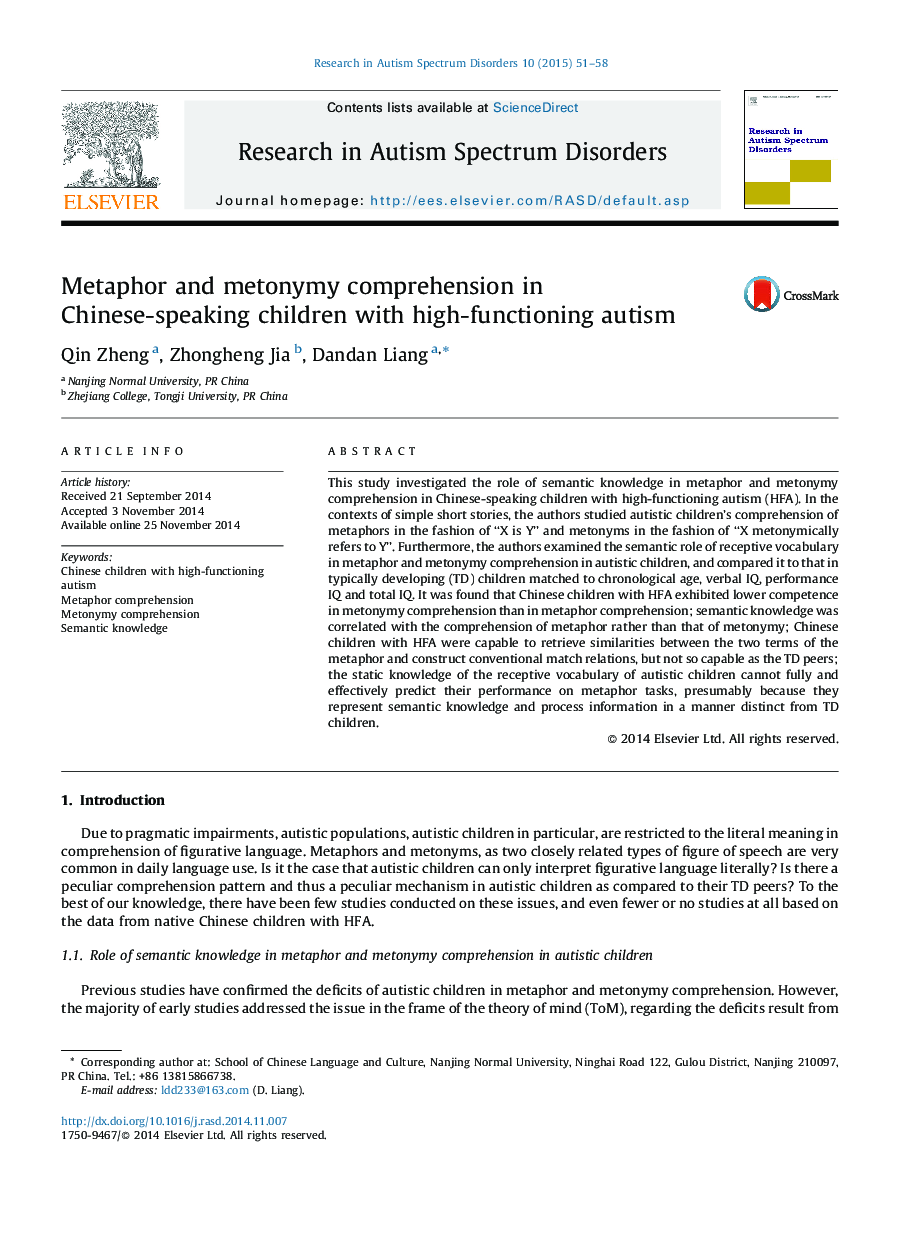| Article ID | Journal | Published Year | Pages | File Type |
|---|---|---|---|---|
| 370027 | Research in Autism Spectrum Disorders | 2015 | 8 Pages |
•We compared the semantic role of receptive vocabulary in metaphor and metonymy comprehension of children with HFA and TD children.•Chinese children with HFA exhibited lower competence in metonymy comprehension than in metaphor comprehension.•Chinese children with HFA performed similarly well to TD children on novel conditions, but worse under conventional condition.•PPVT-R scores of autistic children effectively predict their performance on novel metaphor tasks.
This study investigated the role of semantic knowledge in metaphor and metonymy comprehension in Chinese-speaking children with high-functioning autism (HFA). In the contexts of simple short stories, the authors studied autistic children's comprehension of metaphors in the fashion of “X is Y” and metonyms in the fashion of “X metonymically refers to Y”. Furthermore, the authors examined the semantic role of receptive vocabulary in metaphor and metonymy comprehension in autistic children, and compared it to that in typically developing (TD) children matched to chronological age, verbal IQ, performance IQ and total IQ. It was found that Chinese children with HFA exhibited lower competence in metonymy comprehension than in metaphor comprehension; semantic knowledge was correlated with the comprehension of metaphor rather than that of metonymy; Chinese children with HFA were capable to retrieve similarities between the two terms of the metaphor and construct conventional match relations, but not so capable as the TD peers; the static knowledge of the receptive vocabulary of autistic children cannot fully and effectively predict their performance on metaphor tasks, presumably because they represent semantic knowledge and process information in a manner distinct from TD children.
